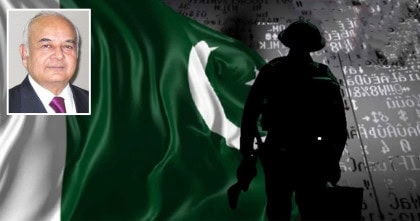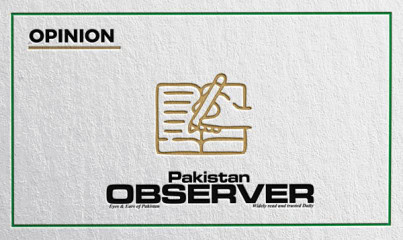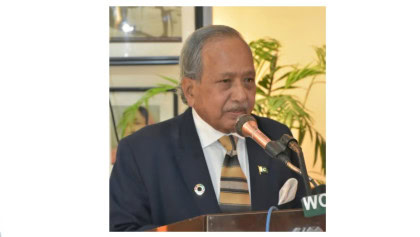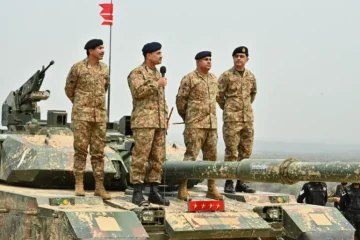Two World Wars had destroyed Britain’s economic and administrative capability to hold onto its colonies in Asia and Africa, making decolonization inexorable.
However, between 1857 and 1947, the seeds of identity crises sown had already germinated into what George Orwell calls “negative nationalism”—a collective consciousness based on communal skepticism and insecurity among Hindus, Muslims, Sikhs and other religions.
This perpetuated distortion of reason has played a key role in shaping the independence movements and strategic constructs of India and Pakistan to this day.
The 1947 division plan was hasty, ill-managed, bloody and callously indifferent to the consequences of the social and geographical time bombs precipitated during the partition process.
India, after successfully denying Nehru’s notion of secular constitutionalism, has reached a point in the 21st century where the majority of Indians have been electing a Prime Minister for a third term, with a posture in politics that contradicts the foundational principles of the Indian Constitution.
Prime Minister Modi’s political career symbolizes Hindutva populism, violence and a rhetoric of historical communalism in domestic politics.
Unlike Pakistan, Indian electoral campaigns often revolve around the question of how to deal with Pakistan.
On the other hand, to counter the fragility of Kashmir and Balochistan, Pakistan has emerged with an overwhelming emphasis on military institutions over civilian ones.
This civil-military imbalance has weakened constitutionalism, fuelled internal political instability throughout Pakistan’s history and fostered a security-centred outlook in its foreign policy.
Both countries have acquired nuclear capabilities, fought three wars, developed proxies against each other and seen their security concerns cripple the enormous prospects of economic cooperation possible between two neighbouring states.
Despite some serious efforts at reform and peace, both countries continue to grapple with the enduring effects of colonialism in their legal frameworks and state consciousness.
The fast-melting Himalayan ice sheet, amid alarming water insecurity for the exploding populations, has further exacerbated the unrest.
The Himalayan water tower, including glaciers in Kashmir, has become critical for sustaining agricultural, industrial and domestic demands in the Indian plains.
The situation alarmingly points toward the first water war on Earth, where the upper riparian India has been threatening to use water as a strategic weapon against the lower riparian Pakistan.
The recent conflict between India and Pakistan was a breathless recap of the 1962 Cuban Missile Crisis between the United States and the Soviet Union.
Though the conflict was short, it has sketched the broad contours of the future strategic landscape in the Indian Ocean and South China Sea.
The majority of impartial military analysts have conceded that Pakistan’s aviators, backed by China’s aerial machines, dominated this conflict.
It was the first battlefield-proven competitive edge of the China-led defense alliance system in this part of Asia.
The Kashmir issue got re-hyphenated with both powers as another nuclear flashpoint after Taiwan.
Moreover, Indians have realized that the domestic perception of PM Modi’s strong statesmanship and his poverty alleviation success is insufficient to overcome his personal and ideological shortcomings in global diplomacy.
Afghanistan and Bangladesh have also become integral variables in the Indian Ocean’s power matrix.
China uses its economic leverage on the Afghan Taliban to counter Indian efforts, corroborating the Taliban’s capability to enlarge the TTP’s operational and moral base along Pakistan’s western border and the BLA’s access to the US-left advanced weapon black market.
China is deepening its strategic footprint around the Indian Ocean—ports in Gwadar, Colombo, Hambantota, Kyaukpyu and an expected airfield at the World War II-era base at Lamonirhat, Bangladesh, a district 135 kilometres from the sensitive Siliguri Corridor, India’s “Chicken’s Neck”.
To conclude, factors such as the colonial legacy of historical communalism, China’s strong revitalization in the Indian Ocean, the existential importance of Himalayan rivers and Kashmir for India and Pakistan, the religiosity of the current decision-makers in both countries and the post-US Afghanistan and post revolution Bangladesh have pushed South Asia into a heightened round of escalation dynamics.
However, this escalation will only exacerbate the pervasive poverty in the region.
According to the World Bank’s recent Poverty and Equity Reports 2025, around 410 million people in India and 105 million in Pakistan earn less than $3.65 a day.
Frustrated by the lack of opportunities in their homelands, the young populations of both countries, including Bangladesh, comprise the largest Diasporas struggling to make ends meet in Europe, America and Gulf countries.
—The author is a columnist, academic, and travel enthusiast.
















